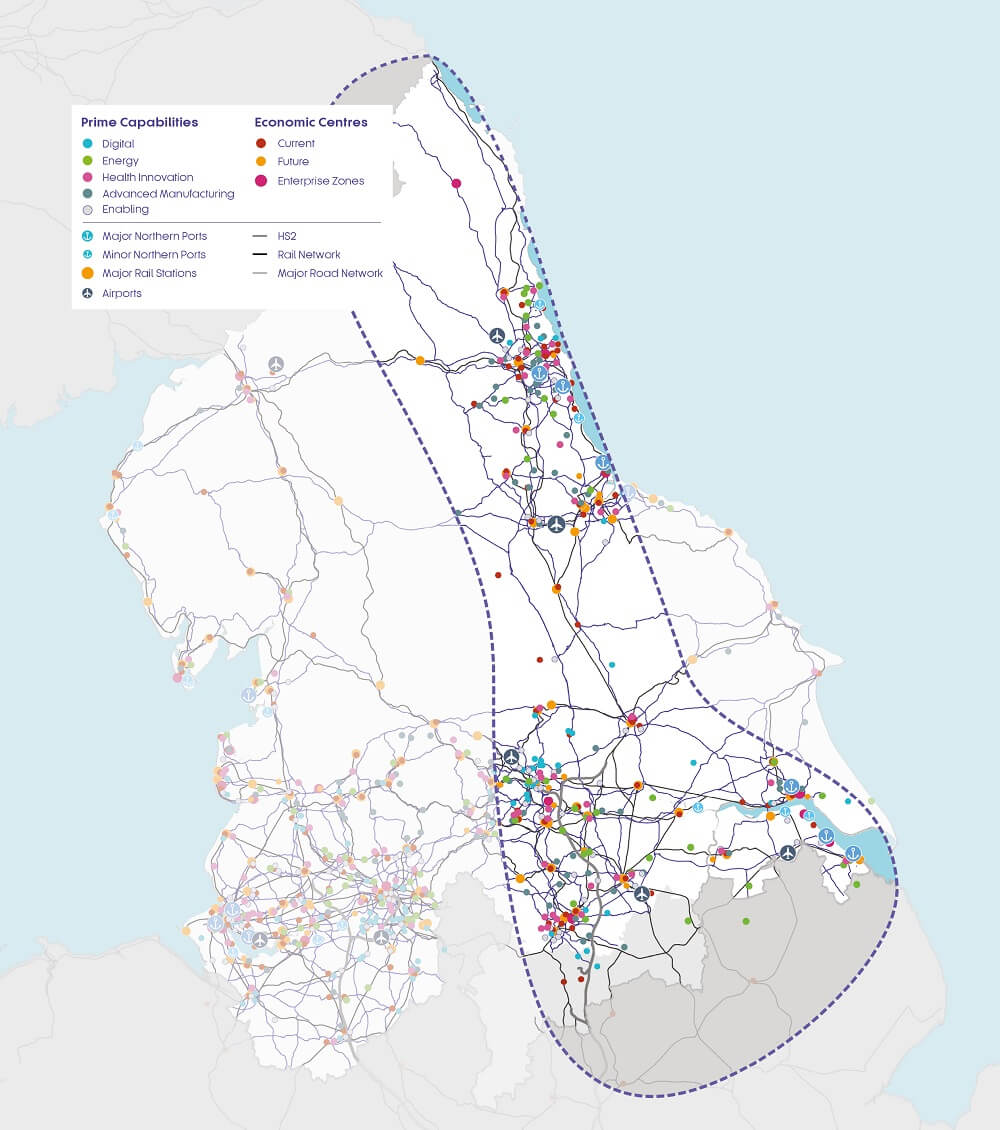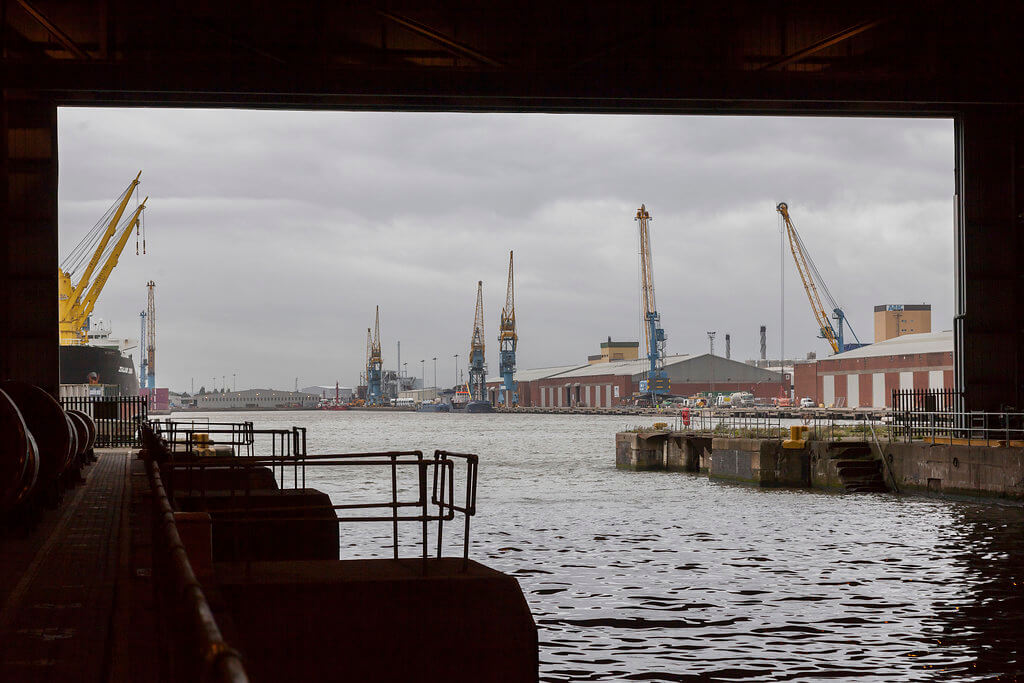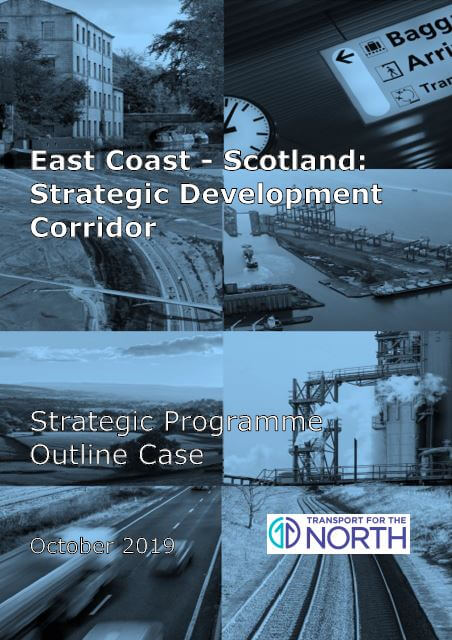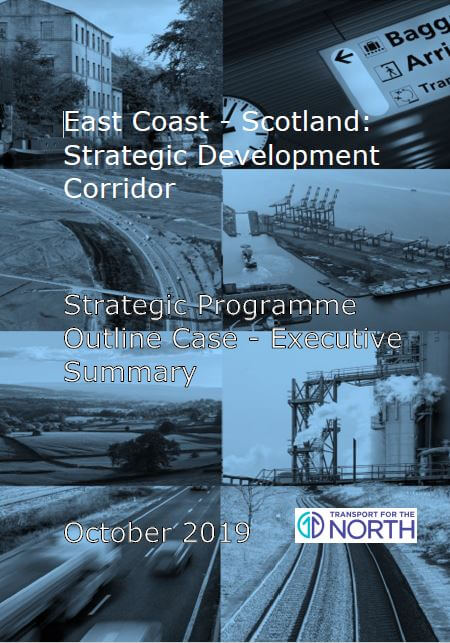







The outputs of this Strategic Development Corridor commission have informed our Investment Programme to provide a pipeline of projects to support economic growth in the North between now and 2050. This corridor is looking at the case for strengthening road connectivity between the Midlands, Sheffield City Region, West Yorkshire, North Yorkshire, North and North-East Lincolnshire, East Riding, Hull and Humber, Tees Valley, the North East and Scotland to better connect the economic centres in this corridor. This will build on the existing road investment commitments and will integrate with the east-west focused Strategic Development Corridors. It will also strengthen and complement the East Coast Corridor to Scotland rail corridor.

The significant economic developments in this corridor include Ports of Blyth, Tyne, Tees, Sunderland and Goole, airports (Newcastle, Durham Tees Valley, Leeds-Bradford, Doncaster Sheffield and Humberside), major rail hubs (Leeds, Sheffield, Newcastle, Doncaster, York), and intermodal freight terminals.
The corridor also contains several nationally significant assets, such as the International Advanced Manufacturing Park (IAMP), in Sunderland and South Tyneside, Tees CCPP NSIP, AMRC in Sheffield City Region and York Potash Harbour Facilities. There is also a growing nuclear and renewable energy sector along the east coast, requiring collaboration and connectivity across the corridor, as well as integration with the Energy Coasts Strategic Development Corridor findings. The North East also has particular strengths in the health sector, which are complemented by emerging growth areas within the Tees Valley, and Sheffield City Region, and a strong and growing health and life science sector in the Leeds City Region. These prime capabilities are supported by strengths in the enabling capabilities including professional services (particularly in the North East and Leeds City Region) and logistics associated with the corridor’s ports, airports and freight hubs.


Work on this corridor will consider the following pan-northern objectives:
Potential improvements to transport infrastructure will consider the impacts of:
Improving transport connections, particularly to the international gateways within this corridor, would support economic growth and attract businesses and investment to the North creating jobs and opportunities across the North.

Following consideration of the evidence gathered, including information from stakeholders we produced an Options Assessment Report.
The report provided a list of potential multi-modal interventions and the reason for their selection. These interventions were considered against our objectives, delivery criteria and performance measures as set out in the draft Strategic Transport Plan and informed TfN’s Investment Programme.
Following the modelling and assessment of our long list of interventions we have completed a Strategic Outline Programme. This provides evidence towards TfN’s Investment Programme by providing a pipeline of projects that would support economic growth in the North between now and 2050.
This assessment saw The Yorkshire – Scotland SDC (Road only) and the East Coast – Scotland SDC (Rail only) merged into a multi-modal Strategic Outline Programme known as ‘East Coast – Scotland SDC’.
The Strategic Outline Programme sets out a programme of short (up to 2027), medium (2028-2035) and long term (post 2035) interventions, to be taken forward by TfN or our Partners.

Strategic Programme Outline Case (SPOC) for the East Coast - Scotland Strategic Development Corridor

Strategic Programme Outline Case (SPOC) Executive Summary for the East Coast - Scotland Strategic Development Corridor
Click on the buttons below for more information on each corridor
Connecting the Energy Coasts Central Pennines Southern Pennines West and Wales East Coast – Scotland West Coast – Sheffield Strategic Development Corridors
CLOSE POPUP [X]